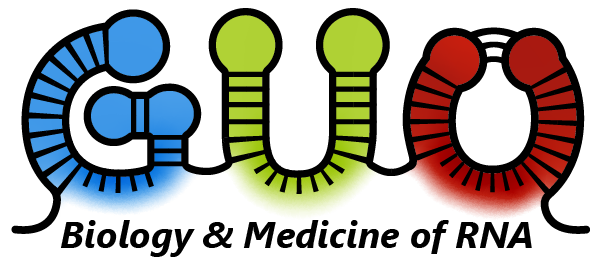Therapeutics targeting RNAs
The ability to modulate RNA molecules greatly broadens druggable targets and is revolutionizing medicine. We develop RNA-binding antisense oligonucleotides and small molecules for fighting a wide range of diseases, including genetic disorders, neurodegenerative diseases, infectious diseases, and cancer. In our drug designs, we take into consideration the three-dimensional structures of target RNAs and RNA-drug complexes.
Heme in microRNA biogenesis
We are investigating how heme allows the maturation of a class of small non-coding RNAs called microRNAs (miRNAs). miRNAs are involved in nearly every aspect of development and cell physiology. Mis-regulation of miRNAs plays important roles in many diseases. To become the mature functional forms, the primary transcripts of miRNAs (pri-miRNAs) have to be specifically recognized and cleaved by cellular processing factors. We found that the essential pri-miRNA processing protein DGCR8 requires heme, an iron-porphyrin complex. Heme is essential for life partially because of its redox activities. Curiously, ferric (Fe3+) but not ferrous (Fe2+) heme activates the pri-miRNA processing activity of DGCR8. We aim to understand how heme binds DGCR8 and whether cellular redox state regulates miRNA maturation. For answering the latter question, we have engineered a fluorescence-based Fe3+-specific heme sensor. We also explore the use of heme analogs in correcting abnormal pri-miRNA processing observed in diseases such as cancer and DiGeorge Syndrome.
